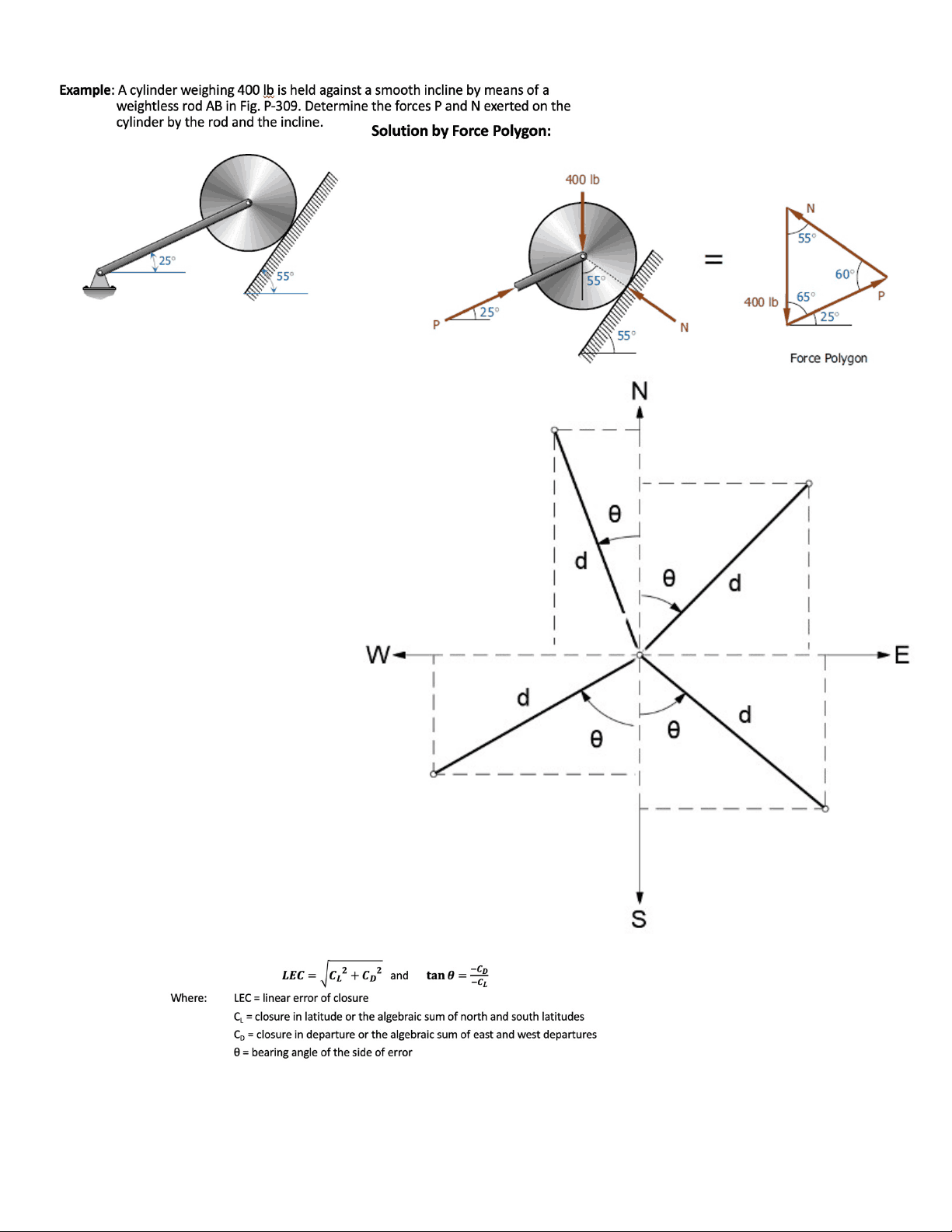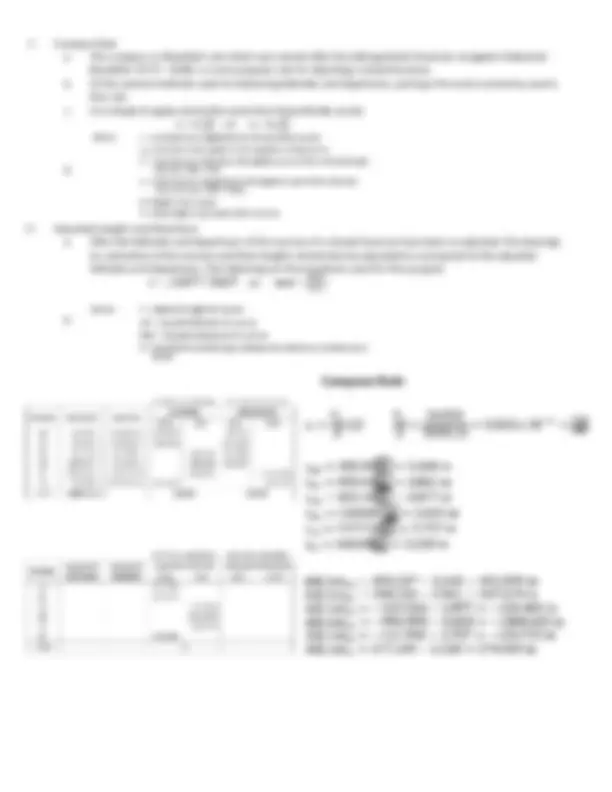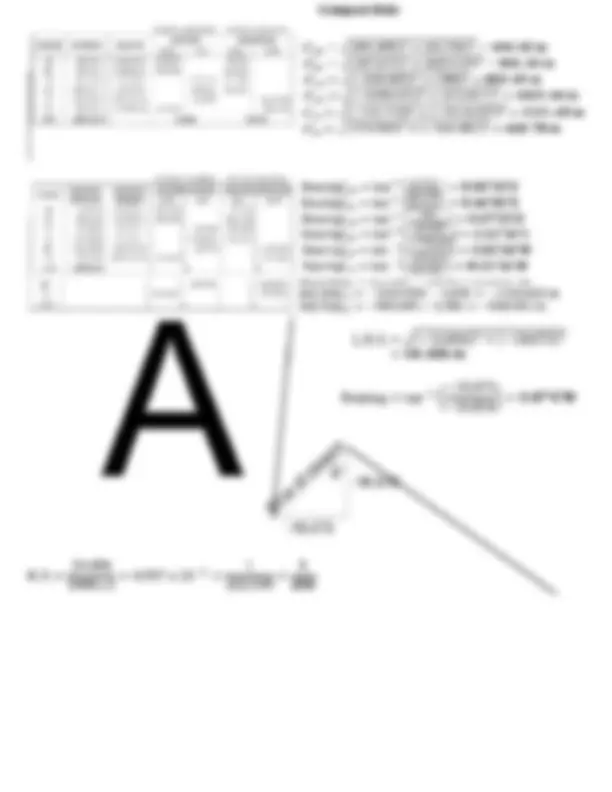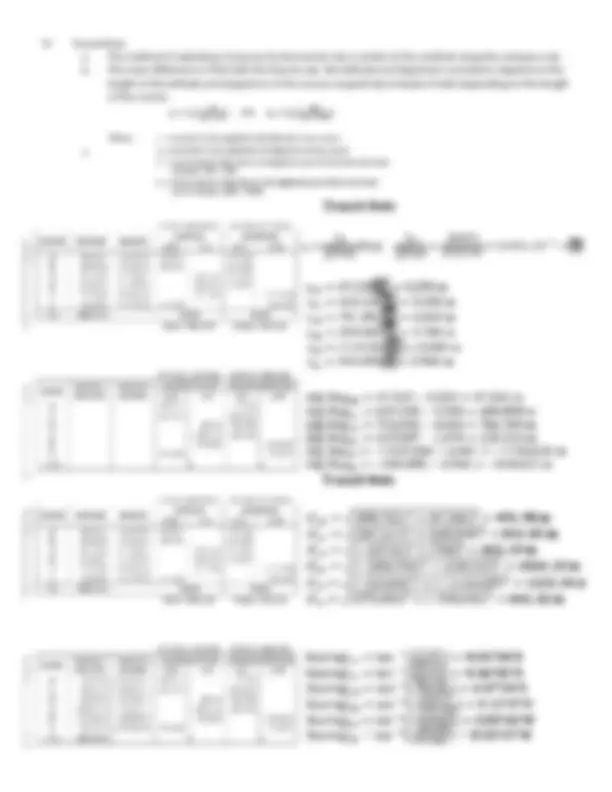





Study with the several resources on Docsity

Earn points by helping other students or get them with a premium plan


Prepare for your exams
Study with the several resources on Docsity

Earn points to download
Earn points by helping other students or get them with a premium plan
Community
Ask the community for help and clear up your study doubts
Discover the best universities in your country according to Docsity users
Free resources
Download our free guides on studying techniques, anxiety management strategies, and thesis advice from Docsity tutors
An overview of traverse computations, focusing on error of closure, compass rule, adjusted lengths and directions, and transit rule. It explains how to determine the linear error of closure and adjust a closed traverse using the compass rule, which is a popular method for balancing latitudes and departures. The document also covers adjusting bearings and lengths to correspond to adjusted latitudes and departures, as well as the transit rule, which adjusts latitude and departure corrections based on the length of the course's latitude and departure. This material is essential for students and professionals in surveying and civil engineering, offering a concise guide to traverse adjustments.
Typology: Study notes
1 / 5

This page cannot be seen from the preview
Don't miss anything!




Chapter 5: Traversing and Traverse Computations I. Error of Closure a. The linear error of closure (LEC) is usually a short line of unknown length and direction connecting the initial and final stations of the traverse. b. It is approximately determined by plotting the traverse to scale, or more exactly by computing the hypotenuse of a right triangle whose sides are the closure in latitudes and the closure in departures, respectively. c. This quantity reflects the algebraic sum of all the accumulated errors of measurement both in angles and distances when running the traverse. d. The length of the linear error of closure and the angle that this line makes with the meridian is determined by the following equations e.
IV. Transit Rule a. The method of adjusting a traverse by the transit rule is similar to the method using the compass rule. b. The main difference is that with the transit rule, the latitude and departure corrections depend on the length of the latitude and departure of the course respectively instead of both depending on the length of the course. c.